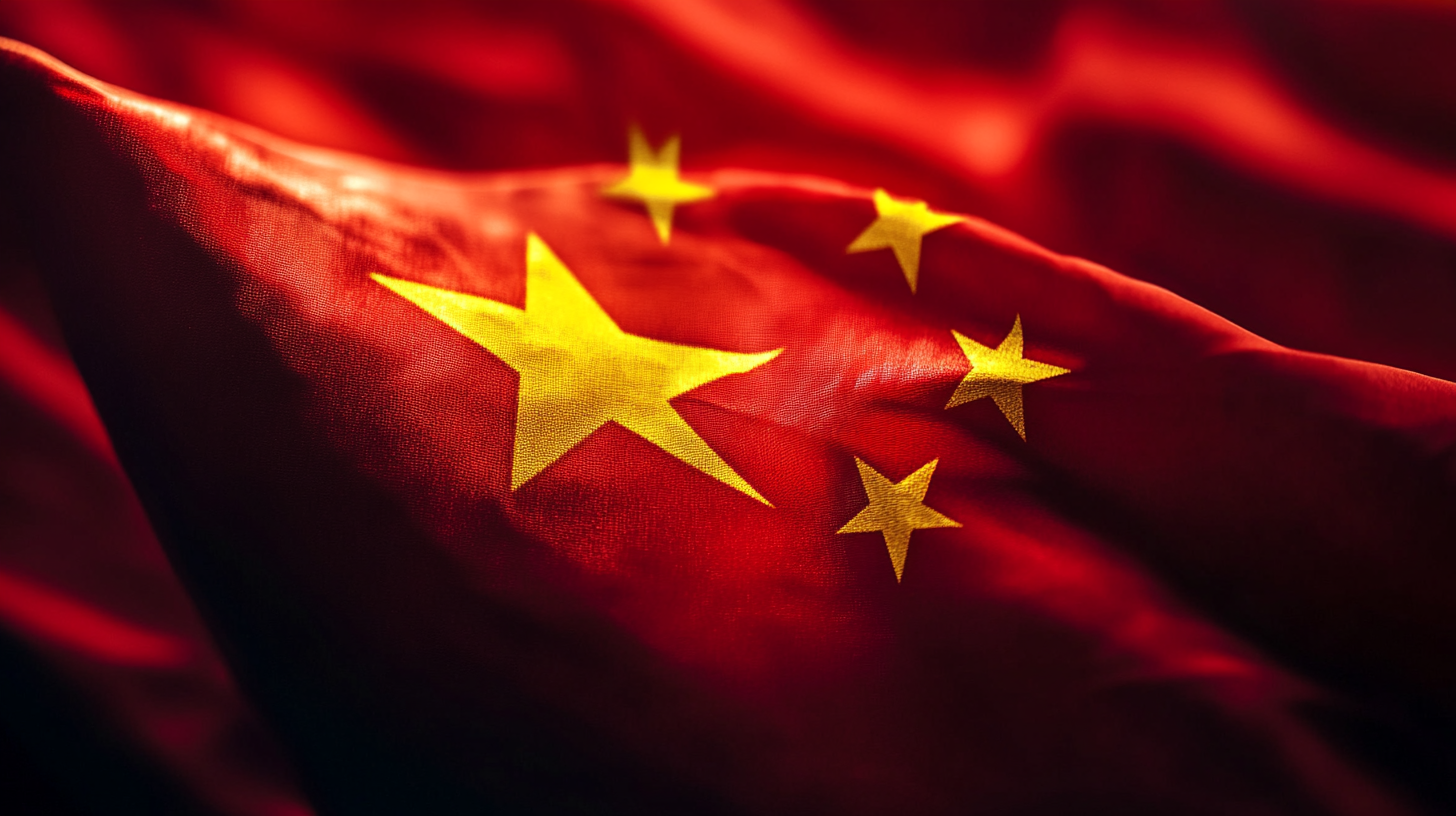China's Resilient Manufacturing Growth in the Face of US China Tariffs with Led Custom Light Solutions
In recent years, China's manufacturing sector has demonstrated remarkable resilience, particularly in the face of escalating tariffs imposed by the United States. According to a report by the National Bureau of Statistics of China, the country's manufacturing output grew by 6.4% in 2022, despite external pressures. This growth is especially notable in specialized segments such as LED custom light solutions, which have seen a surge in both domestic and international demand. The LED lighting market is projected to reach a value of $70 billion by 2025, with custom solutions playing a pivotal role in this expansion. As manufacturers adapt to changing trade dynamics, China's ability to innovate and meet the rising demands for energy-efficient and tailored lighting solutions not only showcases its manufacturing prowess but also underscores the strategic importance of LED custom light products in the global marketplace.

China's Manufacturing Sector: Adapting to Tariff Challenges
China's manufacturing sector is showcasing remarkable adaptability amid the challenges posed by US tariffs. Recent reports indicate that the impacts of tariffs have been widespread, affecting small businesses and their growth potential significantly. Business owners are expressing concerns over reduced profitability and are already adjusting their hiring strategies as they navigate these tariffs. Notably, the Port of Los Angeles demonstrates how critical infrastructure is responding by implementing operational changes to sustain logistics amid these economic pressures.
In light of these challenges, manufacturers in China are not just enduring; they are innovating. Strategic shifts are being observed, allowing firms to optimize supply chains and reduce dependency on traditional trade routes. For instance, studies reveal that companies veering towards optionality in their supply chains—such as diversifying suppliers and leveraging technology—are better positioned to manage tariff implications.
**Tips:**
1. Diversify suppliers and explore local sourcing to mitigate risks associated with tariffs.
2. Invest in technology and data analytics to enhance supply chain resilience and agility.
3. Regularly review and adjust pricing strategies to maintain competitiveness in the face of increasing costs due to tariffs.
China's Manufacturing Sector: Adapting to Tariff Challenges
| Sector | Growth Rate (%) | Impact of Tariffs | Adaptation Strategies |
|---|---|---|---|
| Electronics | 8.5 | Moderate | Increased automation and local sourcing |
| Textiles | 5.2 | Significant | Diversified markets and product innovation |
| Automotive | 7.8 | High | Investment in electric vehicles and R&D |
| Machinery | 6.4 | Moderate | Upgraded manufacturing processes and skills training |
| Consumer Goods | 4.9 | Mild | Enhanced design and branding efforts |
The Role of Led Custom Light Solutions in Sustaining Growth
In the face of escalating US-China tariffs, China's manufacturing sector continues to showcase remarkable resilience, largely aided by innovative technologies such as LED Custom Light Solutions. According to a report by IHS Markit, the global LED market is projected to reach $130 billion by 2025, with vast applications across multiple sectors, including commercial, industrial, and residential lighting. These advancements not only enhance energy efficiency but also reduce operational costs, positioning manufacturers to overcome the challenges presented by trade tariffs.
LED Custom Light Solutions have emerged as a strategic lever for manufacturers aiming to sustain growth amidst external pressures. Industry experts indicate that LED lighting can reduce energy consumption by up to 75%, providing a compelling return on investment that drives companies to prioritize operational efficiency. Furthermore, the adaptability of LED technology allows businesses to customize lighting solutions tailored to specific applications, ensuring that manufacturers remain competitive in both domestic and international markets. As companies harness the power of LED innovations, they can effectively navigate the complexities of the current trade environment while maintaining robust growth trajectories.
China's Resilient Manufacturing Growth Amid US-China Tariffs
Strategic Innovations Driving China's Manufacturing Resilience
China's manufacturing sector is showcasing remarkable resilience despite the ongoing challenges posed by US-China tariffs. Strategic innovations are at the forefront of this growth, enabling companies to adapt and thrive in a fluctuating global market. For instance, the shift toward high-quality production and the integration of green technologies are not only boosting efficiency but also enhancing sustainability. This dual focus on innovation and environmental responsibility is redefining manufacturing in China.
Tips for driving innovation in manufacturing include fostering a culture of continuous improvement and investing in research and development. Companies should prioritize collaboration with tech firms to leverage advancements in automation and artificial intelligence, which can streamline operations and reduce costs. Moreover, maintaining a flexible approach to supply chain management allows manufacturers to swiftly respond to shifts in demand and navigate uncertainties in international trade.
Furthermore, engaging in strategic partnerships can open avenues for exploring new markets and sharing best practices. This collaborative mindset, combined with a commitment to innovation and sustainability, is crucial for manufacturing entities aiming to solidify their competitive edge in a rapidly evolving landscape. By embracing these principles, Chinese manufacturers can not only withstand external pressures but also set the stage for future growth.

Impact of US-China Tariffs on the Global Supply Chain
The ongoing US-China tariffs have significantly impacted the global supply chain, reshaping trade dynamics across various industries. According to a report from the International Trade Centre, the global merchandise trade volume saw a decline of 5.3% in 2019 due to tariff impositions, which has forced companies to reevaluate their sourcing strategies. As a response, many manufacturers have sought to diversify their supply chains to mitigate risks related to tariff exposure. This shift is particularly evident in sectors like electronics and textiles, where companies are increasingly sourcing materials from Southeast Asian countries to avoid punitive tariffs.
In this challenging landscape, companies like Led Custom Light Solutions have demonstrated resilience and adaptability. By leveraging advanced manufacturing technologies and establishing partnerships in less-affected regions, they have managed to maintain steady production rates despite tariff pressures. A McKinsey analysis highlighted that firms that invest in automation and localization of supply chains can reduce their per-unit costs by up to 30%. This strategic pivot not only helps companies navigate tariff impacts but also positions them competitively in the evolving global market.

Future Outlook: Strengthening China's Manufacturing Post-Tariffs
In the wake of escalating trade tensions and tariffs imposed by the United States, China's manufacturing sector has showcased remarkable resilience and adaptability. The current landscape has prompted companies, particularly in the custom light solutions industry, to innovate and refine their processes. By leveraging advanced technologies and smart manufacturing practices, these businesses are not only managing to survive but also thrive despite external pressures. This resilience serves as a cornerstone for future growth, as manufacturers position themselves to meet evolving market demands both domestically and globally.
Looking ahead, the focus for China's manufacturing sector will be on strengthening capabilities that can withstand geopolitical challenges. Emphasizing research and development, companies are set to enhance their product offerings while ensuring quality and efficiency. Collaborations between industries and government initiatives aimed at bolstering supply chains will further solidify China's status as a manufacturing powerhouse. As manufacturers adapt to the new economic realities, the emphasis will remain on innovation, sustainability, and expanding market reach, ensuring a robust foundation for continued success in the post-tariff era.
China's Manufacturing Growth Amidst US-China Tariffs
This chart illustrates the growth of China's manufacturing output from 2018 to 2023, as well as the impact of US-China tariffs. The data highlights a resilient recovery in manufacturing growth despite global trade tensions.
